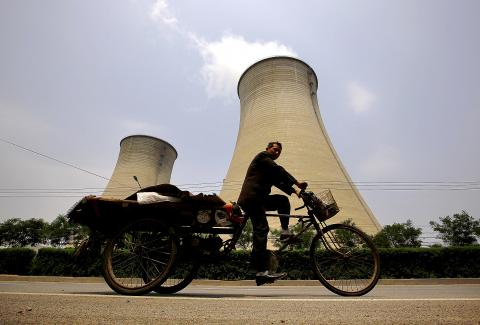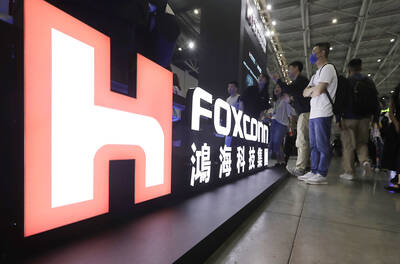As the Chinese economy continues to sputter, prominent corporate executives in China and Western economists say there is evidence that local and provincial officials are falsifying economic statistics to disguise the true depth of the troubles.
Record stacks of excess coal have accumulated at the country’s biggest storage areas because power plants are burning less coal in the face of tumbling electricity demand. However, local and provincial government officials have forced plant managers not to report to Beijing the full extent of the slowdown, power sector executives said.
Electricity production and consumption are considered a telltale sign of a wide variety of economic activity and thus are widely viewed by foreign investors and even some Chinese officials as the gold standard for measuring what is really happening in the country’s economy, because the gathering and reporting of data in China is not considered as reliable as it is in many countries. Indeed, officials in some cities and provinces are also overstating economic output, corporate revenue, corporate profits and tax receipts, the corporate executives and economists said. The officials do so by urging businesses to keep separate sets of books, showing improving business results and tax payments that do not exist.

Photo: Ruterse
The executives and economists roughly estimated that the effect of the inaccurate statistics could be inflating a variety of economic indicators by 1 or 2 percentage points.
The National Bureau of Statistics, the Chinese government agency that compiles most of the country’s economic statistics, denied that economic data had been overstated.
“This is not rooted in evidence,” an agency spokeswoman said. Some still express confidence in the official statistics. Mark Mobius, executive chairman of Templeton Emerging Markets Group, cited the reported electricity figures when he expressed skepticism that the Chinese economy had real difficulties. “I don’t think the economic activity is that bad — just look at the electricity production,” he said.
An economist with ties to the government agency said, however, that officials had begun making inquiries about the authenticity of some data after detecting signs that numbers for electricity demand may have been overstated.
Questions about the quality and accuracy of Chinese economic data are longstanding, but the concerns now being raised are unusual. This year is the first time since 1989 that a sharp economic slowdown has coincided with the country’s once-in-a-decade leadership changeover.
Officials at all levels of government, from provincial party secretaries to county administrators, are under enormous pressure to report good economic results to Beijing as they wait for promotions, demotions and transfers to cascade down from the capital. That has meant that some measures of economic activity are being falsified, according to the executives and economists.
A top corporate executive in China with access to electricity grid data from two energy-hungry provinces in east-central China, Shandong and Jiangsu, said electricity consumption in both provinces had dropped more than 10 percent in May from a year earlier.
Another executive said that electricity consumption had also fallen in parts of western China. At the same time, the economist with ties to the statistical agency said cities and provinces across the country had reported flat or only slightly rising electricity consumption.
Rohan Kendall, the senior analyst for Asian coal at Wood Mackenzie, the global energy consulting firm, said that coal stored at Qinhuangdao port had hit 9.5 million tonnes this month, as it arrives faster than it is needed by power plants in the south. That surpasses the previous record of 9.3 million tonnes, set in November 2008, near the bottom of the global financial downturn.

A proposed 100 percent tariff on chip imports announced by US President Donald Trump could shift more of Taiwan’s semiconductor production overseas, a Taiwan Institute of Economic Research (TIER) researcher said yesterday. Trump’s tariff policy will accelerate the global semiconductor industry’s pace to establish roots in the US, leading to higher supply chain costs and ultimately raising prices of consumer electronics and creating uncertainty for future market demand, Arisa Liu (劉佩真) at the institute’s Taiwan Industry Economics Database said in a telephone interview. Trump’s move signals his intention to "restore the glory of the US semiconductor industry," Liu noted, saying that

On Ireland’s blustery western seaboard, researchers are gleefully flying giant kites — not for fun, but in the hope of generating renewable electricity and sparking a “revolution” in wind energy. “We use a kite to capture the wind and a generator at the bottom of it that captures the power,” said Padraic Doherty of Kitepower, the Dutch firm behind the venture. At its test site in operation since September 2023 near the small town of Bangor Erris, the team transports the vast 60-square-meter kite from a hangar across the lunar-like bogland to a generator. The kite is then attached by a

Foxconn Technology Co (鴻準精密), a metal casing supplier owned by Hon Hai Precision Industry Co (鴻海精密), yesterday announced plans to invest US$1 billion in the US over the next decade as part of its business transformation strategy. The Apple Inc supplier said in a statement that its board approved the investment on Thursday, as part of a transformation strategy focused on precision mold development, smart manufacturing, robotics and advanced automation. The strategy would have a strong emphasis on artificial intelligence (AI), the company added. The company said it aims to build a flexible, intelligent production ecosystem to boost competitiveness and sustainability. Foxconn

STILL UNCLEAR: Several aspects of the policy still need to be clarified, such as whether the exemptions would expand to related products, PwC Taiwan warned The TAIEX surged yesterday, led by gains in Taiwan Semiconductor Manufacturing Co (TSMC, 台積電), after US President Donald Trump announced a sweeping 100 percent tariff on imported semiconductors — while exempting companies operating or building plants in the US, which includes TSMC. The benchmark index jumped 556.41 points, or 2.37 percent, to close at 24,003.77, breaching the 24,000-point level and hitting its highest close this year, Taiwan Stock Exchange (TWSE) data showed. TSMC rose NT$55, or 4.89 percent, to close at a record NT$1,180, as the company is already investing heavily in a multibillion-dollar plant in Arizona that led investors to assume